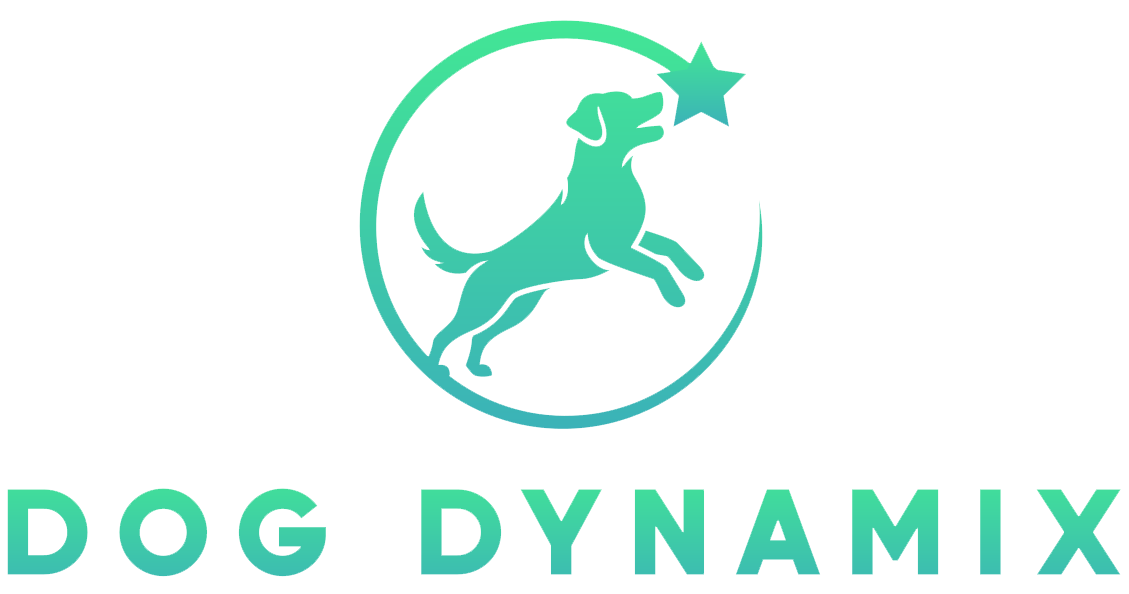Positive reinforcement training is an absolutely critical component for teaching your dog how to coexist in our world, create a strong bond with their owner, correlate experiences with feeling of comfort and wellbeing, and make happy working dogs. But, we don’t use exclusively positive reinforcement only techniques. More on that to follow….
There are Four Quadrants of Learning
- There are four quadrants of learning, and no single one is more powerful than another. The best learning happens (in training and in NATURE) when all four are applied. Positive Dog Training seems to be increasingly captured by non-scientific and eutopian idealists. And, I get it. In a perfect world I would love to create a well-behaved dog with the simple promises of affection, food and play. But this is not only unscientific, but just plain impossible.
When you hear someone describing training, it’s important to understand:
- Reinforcers = To make a behavior more likely to occur in the future.
- Responses from the environment that increase the probability of a behavior being repeated.
- Reinforcers can be either positive or negative.
- You pet your dog when it jumps on you = Positive Reinforcement
- Punishers = Behavior less likely to occur in the future.
- Responses from the environment that decrease the likelihood of a behavior being repeated. Punishment weakens behavior.
- You use a squirt bottle to stop nuisance barking = Positive punishment
- Responses from the environment that decrease the likelihood of a behavior being repeated. Punishment weakens behavior.
- Positive = Addition
- The addition of a stimulus
- You say sit, your dog sits, and you give them a treat = Positive Reinforcement
- The addition of a stimulus
- Negative = Subtraction
- The subtraction of a stimulus, or taking something away from the dog
- You are walking your dog and they start to pull, so you stop walking and wait till your dog stops pulling = Negative Punishment
- You say sit, your dog doesn’t sit and you apply leash tension, and the dog sits, and you remove the leash tension = Negative Reinforcement.
- The subtraction of a stimulus, or taking something away from the dog
What is Positive Reinforcement Training
By definition positive reinforcement dog training means we (ONLY) add something to the learning equation to make a behavior more likely to occur in the future.
The power of positive reinforcement is several fold. It makes us feel good. It makes the dog feel good. When applied appropriately it creates a dog who understands they can make a reward appear through their actions (operant conditioning). And even more valuable, and of interest to me, is that positive reinforcement can physiologically affect your dog in a really productive way. Food, play and affection elicit a dopamine and serotonin response; The same brain chemicals responsible for happiness, focus, calmness, and long-term feelings of well being. And the fact that we can manipulate that chemical response as a dog trainer is truly powerful!! However…..
When someone presents positive reinforcement training in a way that is Good vs. Evil, you can stop listening to them immediately, because they are demonstrating they are not educated in the science of learning, and likely not applying it properly, even if they are using treats! Are they asking you to use a leash? a harness? A Head Collar? All of these tools are Negative Reinforcement and/or positive punishment tools.That is not positive reinforcement only training, now is it?
While they may seem ‘kinder and gentler,’ there is a lot of data on injury (including improper bone development by impinged biomechanics) caused by head halti’s and no-pull harnesses. AND, Before you come at me with the Cooper et al paper that has been blasted all over the internet, please see the link at the bottom.
Effect of Harness Design on Biomechanics of Domestic Dogs https://www.tandfonline.com/doi/full/10.1080/10888705.2023.2259796
Uh-OH! Dogs can find their own Positive Reinforcement (whether you like it or not)
The environment, and all of the stimuli within it, is also playing a role. Further more, other brain chemicals are also affecting our dog’s behavior. Dogs get a lot of joy out of barking, digging, chewing, running, and sniffing, and all of the variations of those behaviors. Dogs can find barking and lunging in territorial displays, or predation (chasing and/or killing other animals), or even fighting with other dogs extremely rewarding. Often times they not only experience a huge dopamine dump, but also an adrenaline and epinephrine surge in these activities. Who doesn’t love a good thrill?
Does your Husky pull on the leash like he’s training for a sled race? Is your Akita great with your family, but anyone else coming near the property risks life and limb? Dog breeds have been carefully selected to find specific activities extremely rewarding. Sighthounds love to chase animals (at over 40 mph, mind you). Livestock Guardian Breeds bark and can be extremely territorial. Herding breeds love to chase anything that moves. Hounds are ruled by their noses (and adept at tuning out their handlers… Beagles, anyone?).
What does your dog LOVE to do? Are they obsessed with squirrels? Do they chase cars? Are they relentless counter surfers? Does your dog loose all focus if other dogs are around, or people? These are known as competing motivators.
Balanced Dog Training is More Effective
The reason we are not positive only dog trainers is because we understand the reality of living with dogs in the actual world. The real world is not a sterile place, and we can’t control all of the possible ways our dogs can get reinforcement for behaviors that we find annoying, let alone dangerous to themselves or others. The other quadrants must be applied in order to mitigate those behaviors for a well-rounded approach. Yes, using positive reinforcement for teaching a dog to come when you call them is extremely valuable, but even more EFFECTIVE is rewarding the dog for the correct response, and using an *appropriate punishment when a *known command is ignored. Over repetition, the dog is very aware that they can avoid a punishment and choose the reward, instead. If those were your options, what would you choose? We use the dog training methods that are most effect, and most humane, for an optimal result.
The word punishment has become a dirty word, but it is NATURAL. Animals punish each other on a regular basis. You can watch any animal documentary for evidence if you need it. Of course, we don’t have to reduce our use of punishment to the measure in which other animals use it. I have seen the crazy dominance theory techniques, including biting a dog’s ear, and I am not on board with that. We try to use the Least Invasive, Minimally Aversive (LIMA) Techniques that we can, in the time that is allowed. Punishment can absolutely be applied inappropriately, which is why it’s best to seek guidance from a professional dog trainer.
Let’s be rational, and realistic. We get punished (naturally) by our choices all of the time. Have you ever grabbed a hot item, that you knew was too hot to grab but tried it anyway? Are you in complete avoidance of coffee now, because of it? Not all punishment is cruel or injurious. Are we really going to (rationally) argue that using a squirt bottle to stop nuisance barking is cruel and harmful? Or that saying, “No.” and following that up with a leash correction is bound to cause irreparable damage? An ecollar, set to the highest level, is no correction at all compared to a dog running into the path of a moving car.
If you visit our youtube channel, or social media pages, you can see thousands of examples of our combined approach to dog training. We often take dogs that are close to graduating our Board and Train Programs up to Big Dog Ranch, to finalize their off leash training. There’s no way I could do this without ecollar training. Big Dog Ranch is a 40 acre (dog paradise) property surrounded by thousands of acres of BLM lands and chalk FULL of wildlife. It is of utmost importance that I have confidence in the dog’s recall so they can enjoy off leash freedom.
Do these dogs look like they are emotionally damaged by the training techniques or collars they are wearing?
Operant Conditioning
These dogs are happy because they have reached the stage in training when they understand how to drive the production of a reward, and AVOID punishment. Punishment must be measured, appropriate, and unemotional to be effective. When applied appropriately, you can expect your dog to process it correctly. During the learning process, there are moments of discomfort. However, I whole heartedly believe in this methodology because discomfort is a natural part of life, the ability to have this level of freedom is worth it, and it is key to resilience.
One of the seldom discussed fallouts of positive reinforcement training is stress and aggression. Dogs that have never been made uncomfortable are not resilient and have trouble with self-regulating, patience and frustration. Cooperative medical care isn’t always possible, and dogs that have not been taught to give to pressure will lash out during routine medical procedures because they haven’t been conditioned to restraint.
Is balanced dog training perfect? NO. We cannot control dog’s past experiences and so there are some cases in which the dog will still have a ‘restricted’ lifestyle because their past behaviors have such a strong reward history. This is why aggression is managed and never cured….. But that’s another blog.
Relationship Base Dog Training
The last component of teaching your dog to be well-behaved is the Relationship. I have seen many dogs with a lot of training skills; they know how to heel, sit, stay, and come when called. However, the owner doesn’t use those skills in a way that promotes their leadership to address demand barking, refusing to basic husbandry (nail trims, bandaging or bathing). A dog can adore you, and not respect you at all. If you don’t have your dog’s respect, you will continue to struggle no matter what you reinforce with food!
Best Dog Training Denver
In summary, balanced dog training is the most effective, wholistic approach to teaching dogs how to behave in the real world. The benefits outweigh the consequences, and give the dogs more freedom. When done properly, the dog should be sufficiently motivated by rewards, and (more often than not) avoid punishment in the presence of competing motivators.
The 2020 Cooper et al paper is Junk Science – https://www.frontiersin.org/articles/10.3389/fvets.2021.629746/full




